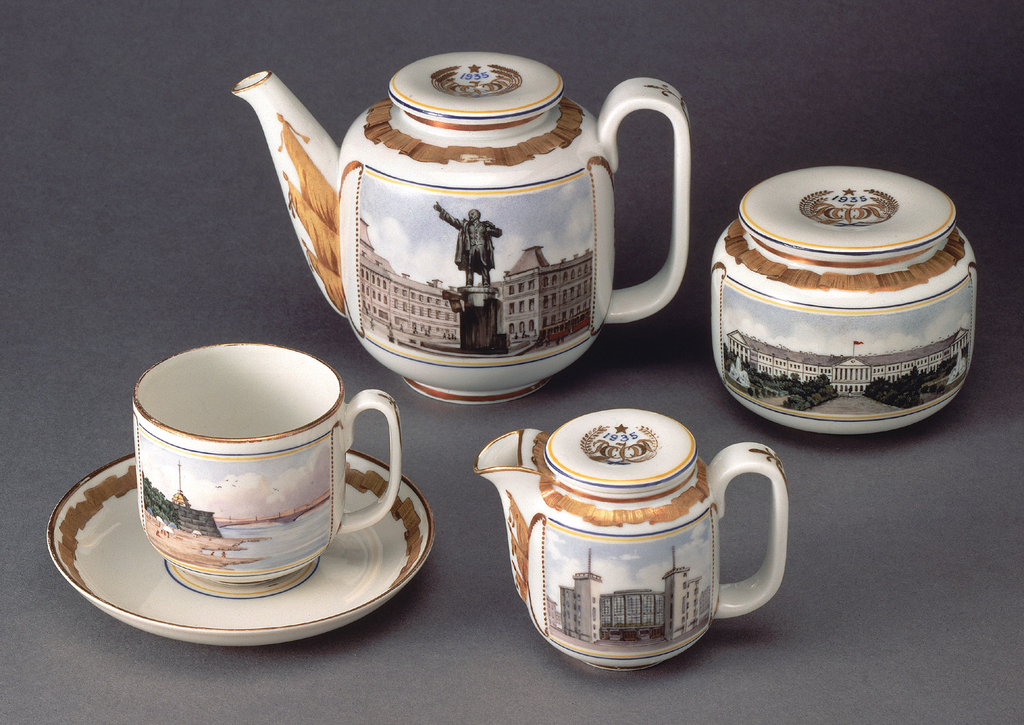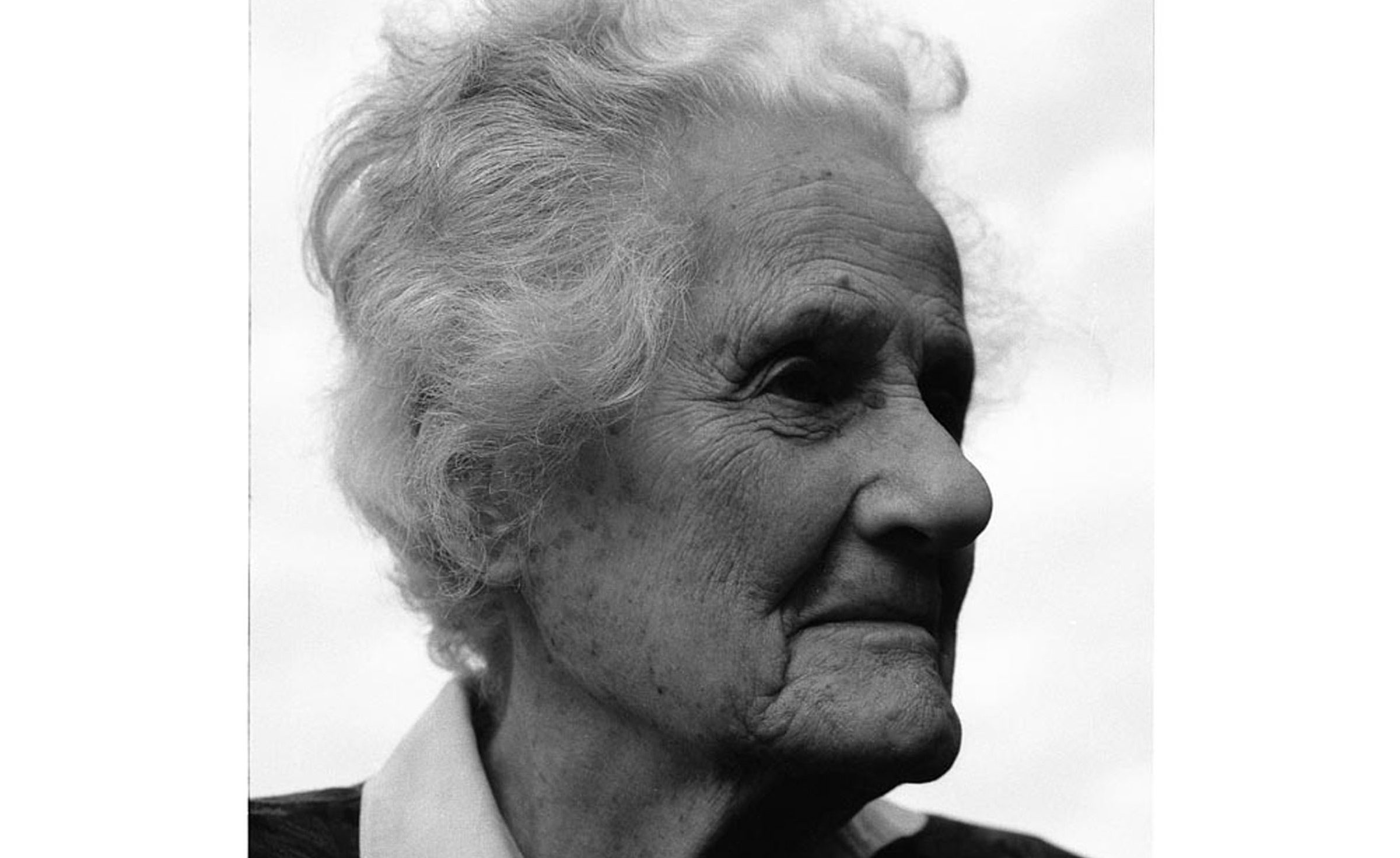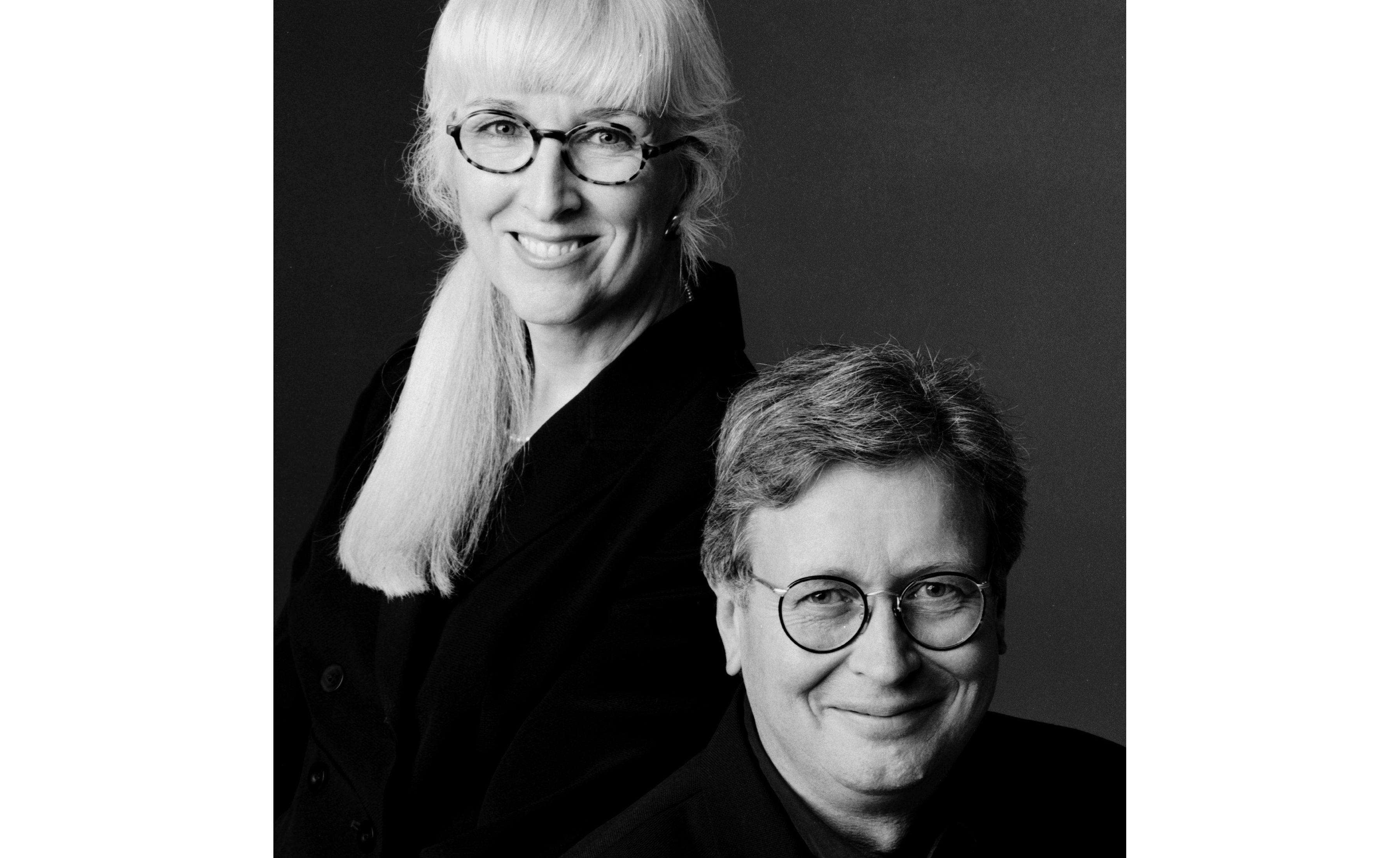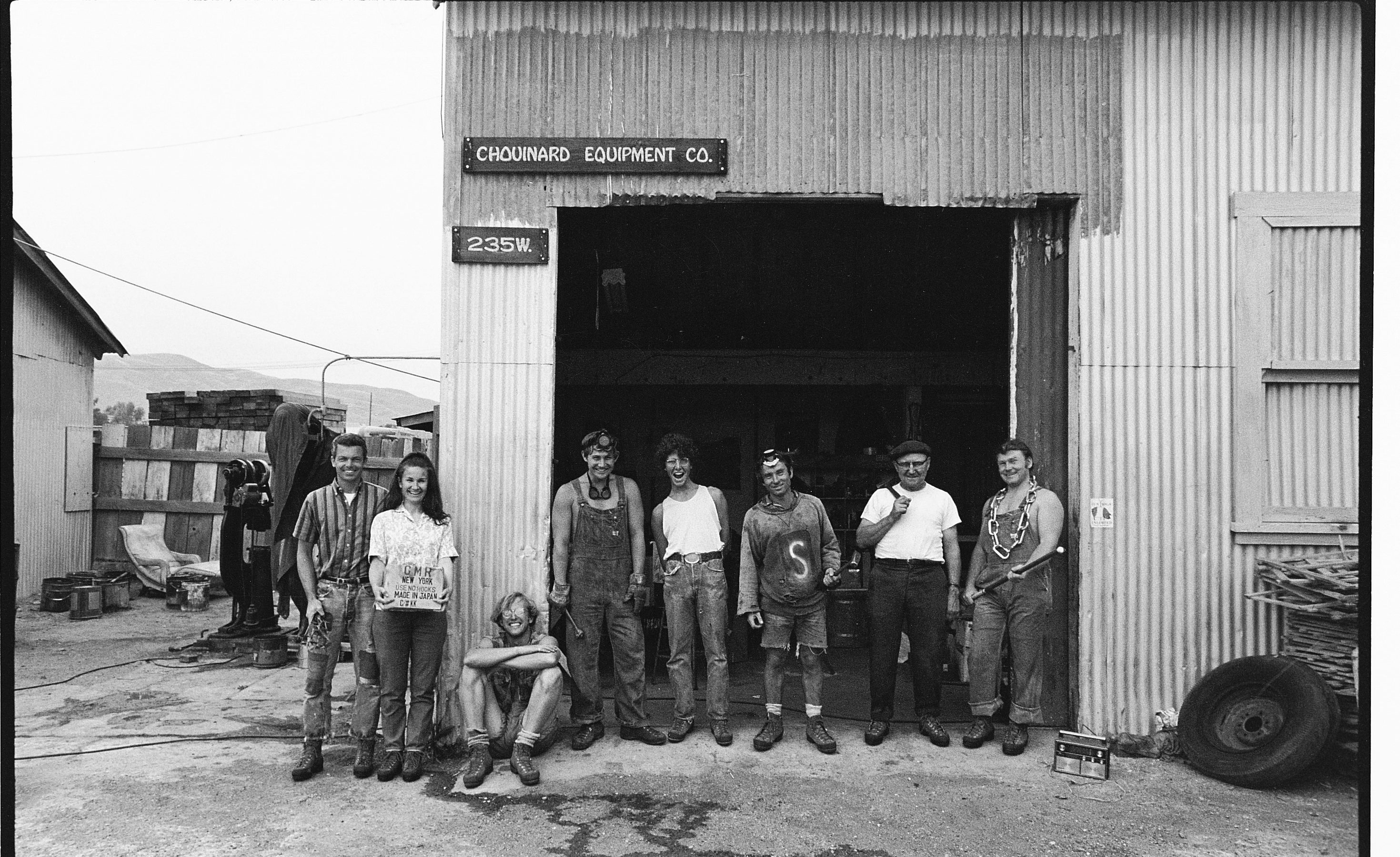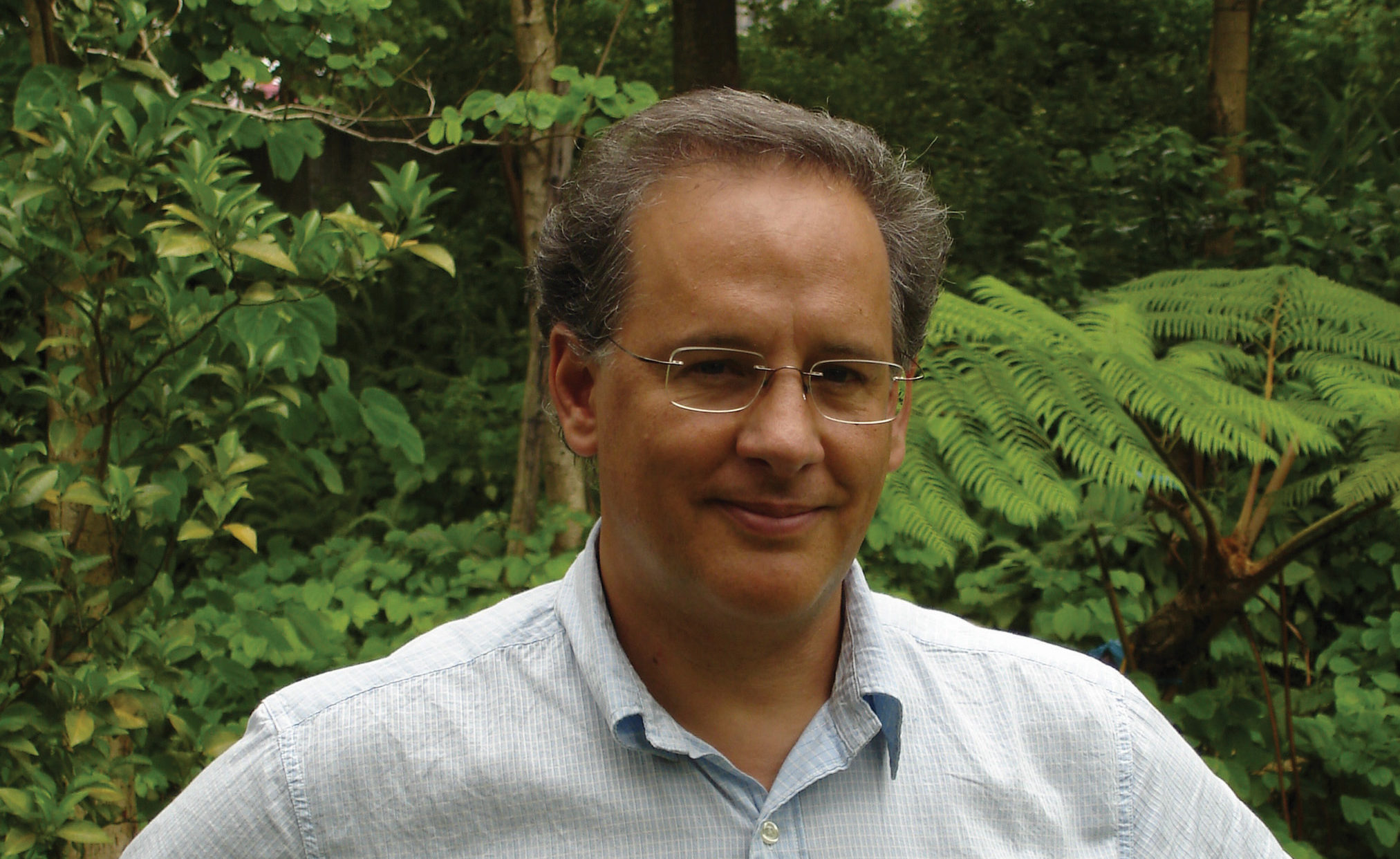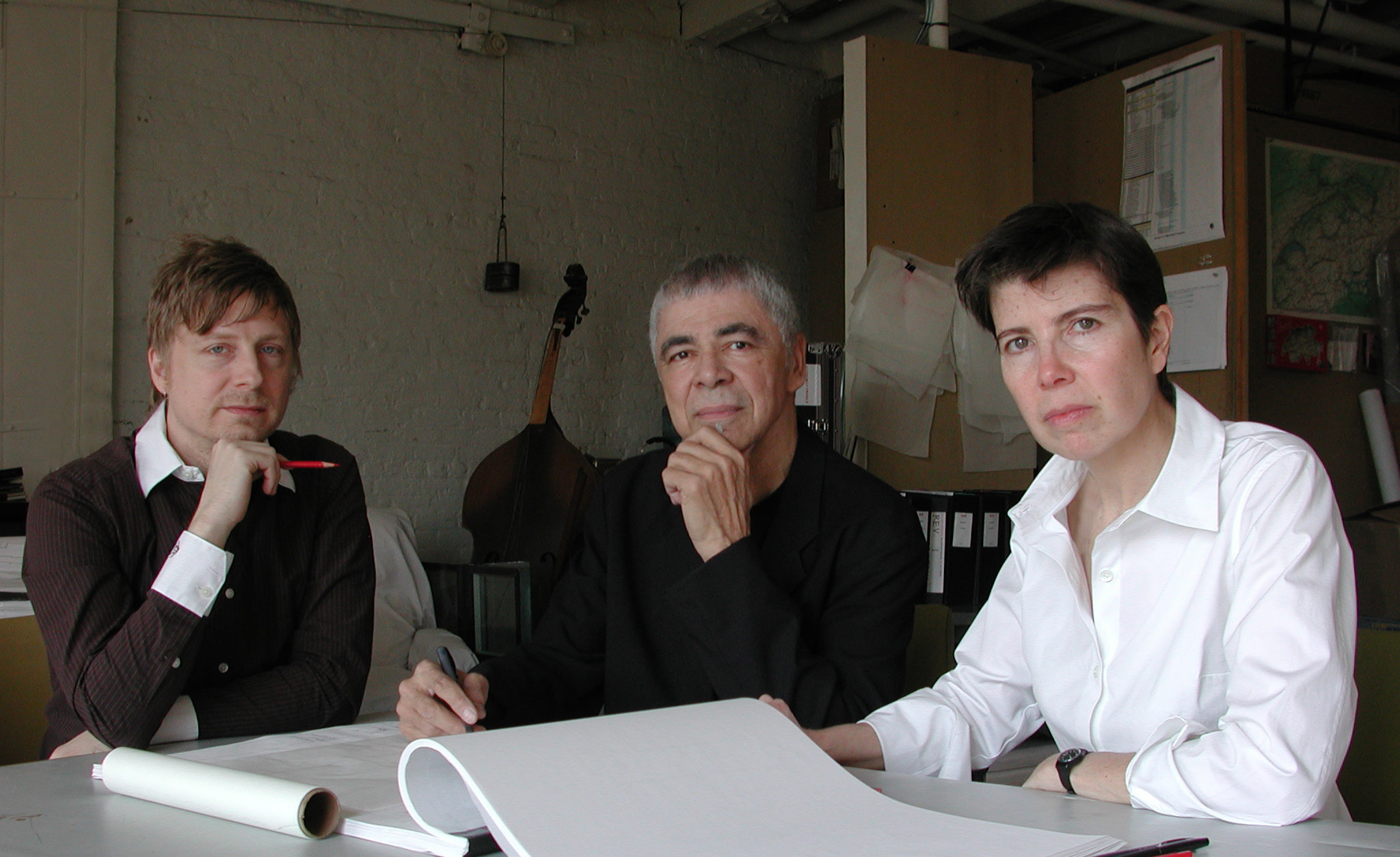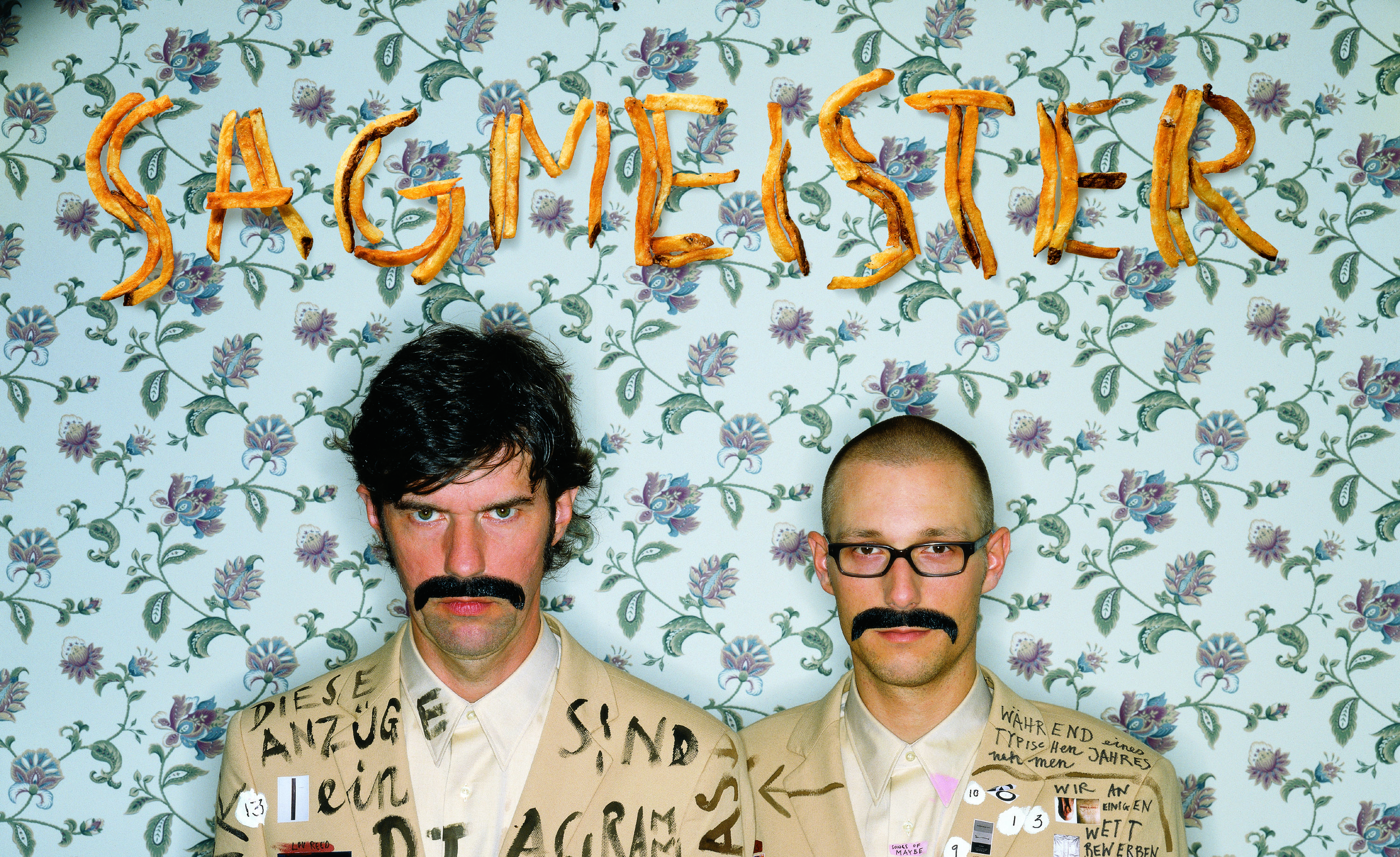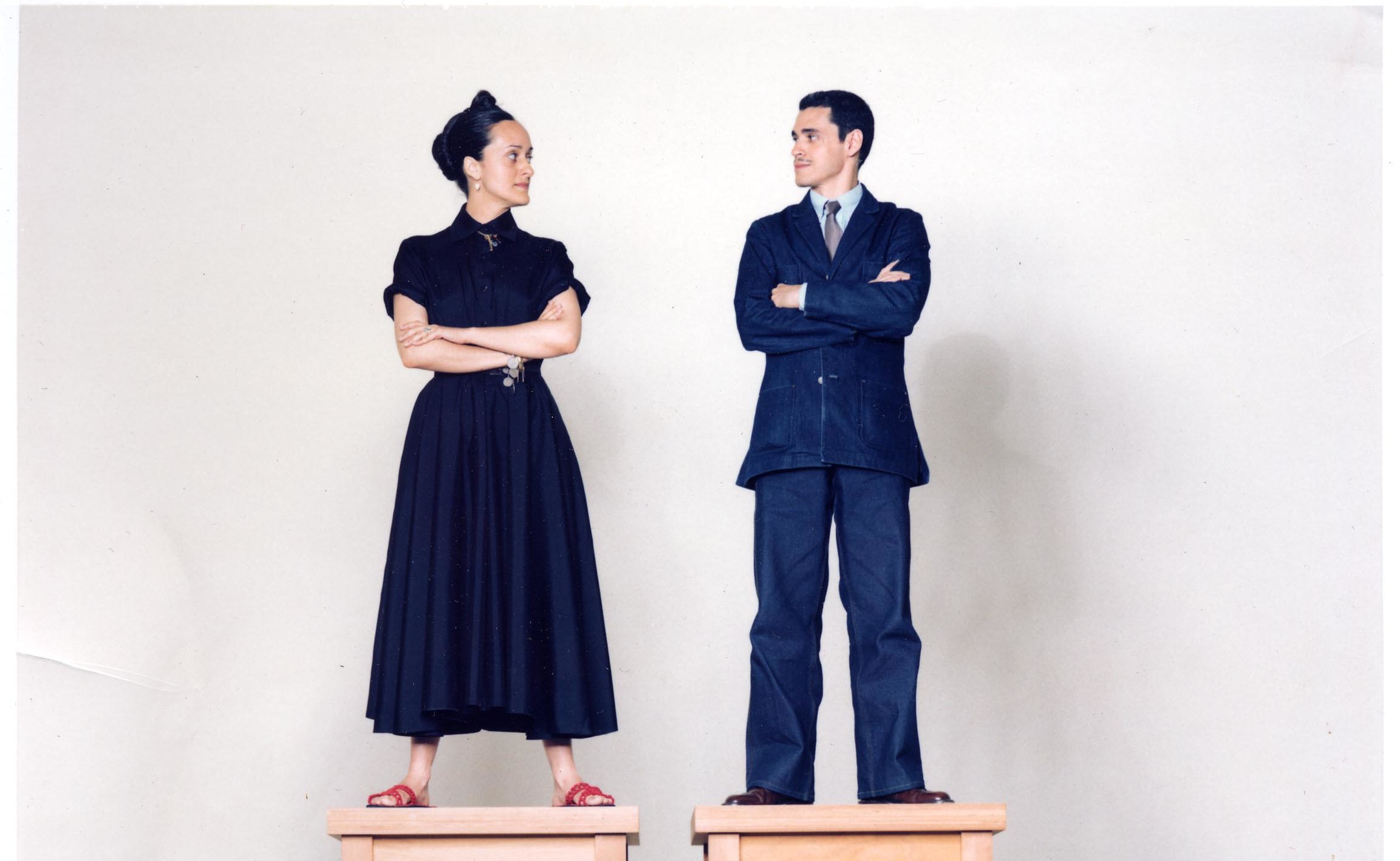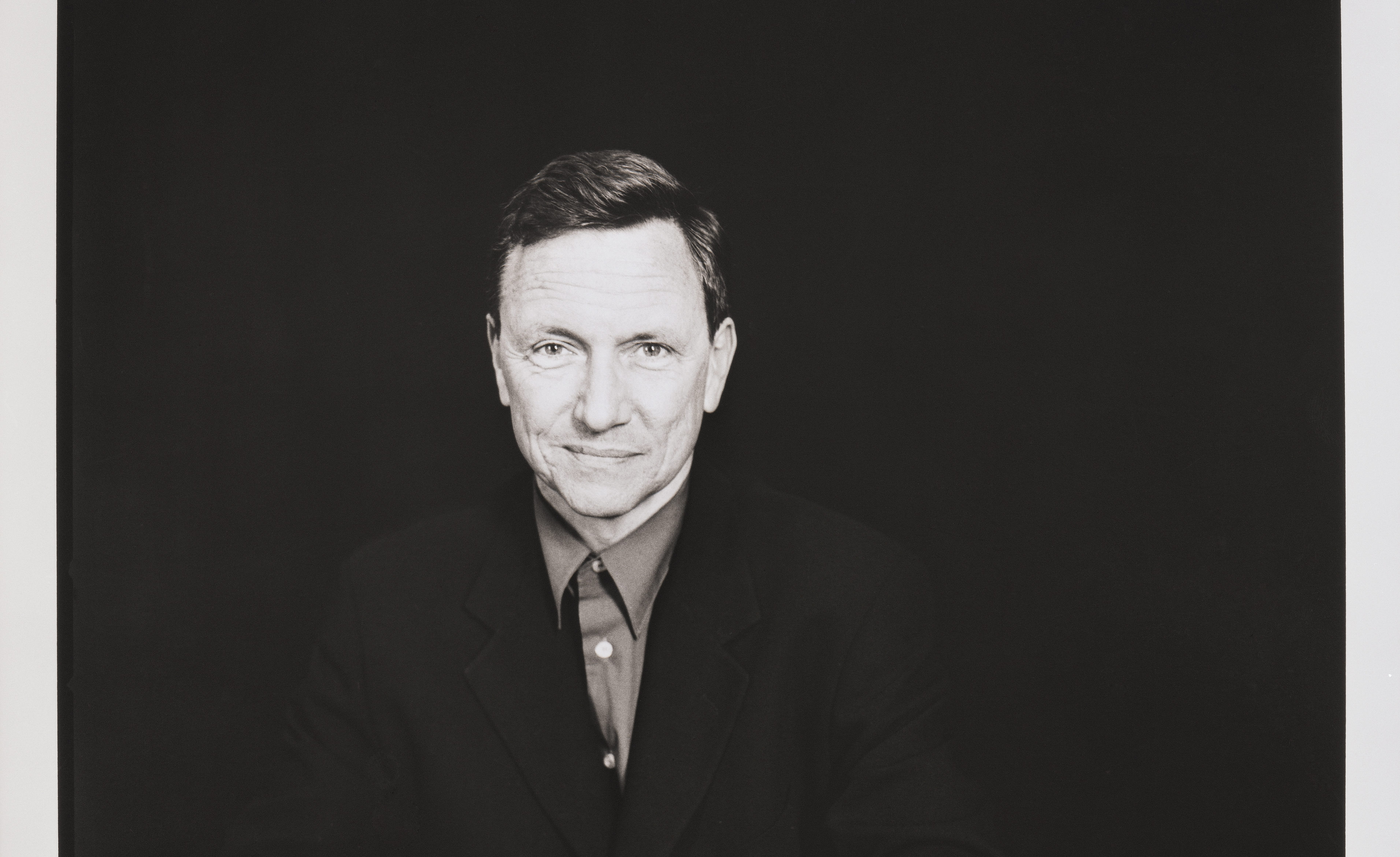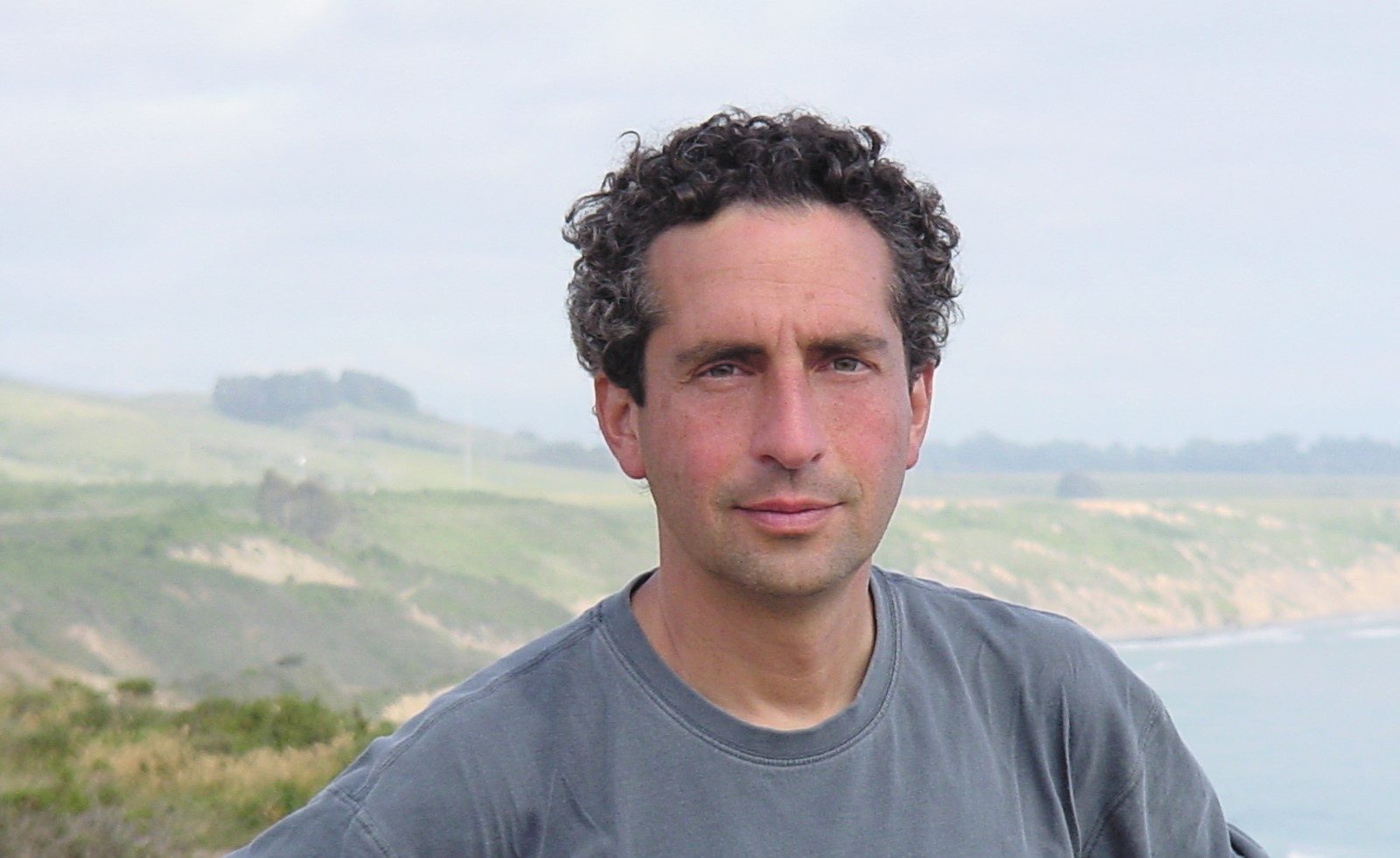2005 National Design Award Winners

Celebrate design
The National Design Awards program celebrates design as a vital humanistic tool in shaping the world, and seeks to increase national awareness of design by educating the public and promoting excellence, innovation, and lasting achievement.
In celebration of National Design Month, October’s Object of The Week posts honor past National Design Award winners.
A version of this post was published on November 13, 2012.
Eva Zeisel, a major figure in twentieth-century industrial design, won the National Design Award for Lifetime Achievement in 2005. Although best known for her contributions to mid-century American modernist ceramics, she worked with manufacturers around the world, in a career that spanned more than eighty years. Cooper Hewitt is fortunate to have examples from her Intourist tea service, designed in 1933 (Intourist was the Soviet Union’s official state travel bureau).
Zeisel began her career in her native Hungary in 1925, and by 1928, was designing modernist ceramics in Germany. After visiting the Soviet Union in the early 1930s, she took a job at the Lomonosov Porcelain Factory in Leningrad. Zeisel explored the factory’s archive of eighteenth-century tableware and realized that “the clean lines of modern design could be successfully combined with sensuous, classic shapes.”
Her Intourist tea service consists of short cylindrical and circular forms. To meet the Soviet drive to rationalize ceramics, Zeisel designed the simple shapes for inexpensive production as well as for visual and physical appeal. Designs for the Lomonosov Factory also had to meet state-set standards of social realism. This service’s painted decoration, “Leningrad, 1935,” designed by artist Varvara Petrovna Freze, commemorates the city’s new and old monuments. In celebration of Soviet achievement, a lively, colorful scene featuring a “modern” sculpture or official building is presented on one side of each piece. The Soviet self-image stands in contrast to a staid, gilded image of a historic site on the opposite side. The hot water pot[1] shows a view of Sergei Evseyev’s 1926 statue of Lenin, countered by the gilt image of the nineteenth-century St. Isaac’s Cathedral (below). Zeisel’s minimal ceramic forms are accentuated by traditional gilded decorations of ribbons and flags at the mouths, handles, and spouts. The service presents a fascinating combination of design for utility, for appeal, and for the communication of Soviet propaganda.
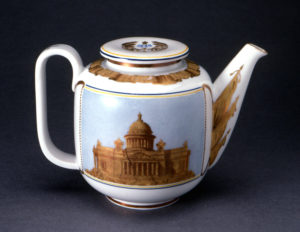
Hot Water Pot from the Intourist Tea Service (“Leningrad 1935” Pattern), view of St. Isaac’s Cathedral; porcelain, vitreous enamel, gold; 1989-41-88-a,b
In 1936, one year after being appointed artistic director of the Russian china and glass industry, Zeisel was falsely accused of conspiring to kill Stalin. She was imprisoned and spent most of the next sixteen months in solitary confinement, but was then abruptly released. Zeisel emigrated to the United States in 1938. She taught ceramics as industrial design at Pratt Institute in Brooklyn, and began to revive her design practice. She brought a unique and playful organic modernism to the tableware and furniture she designed well into 2011, when she died at age 105.
Cynthia Trope is Associate Curator of Product Design and Decorative Arts at Cooper Hewitt, Smithsonian Design Museum.
[1] Cooper Hewitt’s Intourist group consists of a hot water pot (used as a teapot), creamer, sugar bowl, two cups, and a saucer. Reflecting Russian tea-drinking practice, Zeisel designed the service as a five-piece range, including a pot for heated water and a smaller teapot to contain a strong infusion of tea. This allowed each drinker to mix different amounts of the concentrate and hot water, making a cup of tea according to their own taste. See: Karen L. Kettering, “Lomonosov State Porcelain Factory; Dulevo Porcelain Factory” in Eva Zeisel: Life, Design, and Beauty, Pat Kirkham, Pat Moore, Pirco Wolfframm (San Francisco, CA: Chronical Books, 2013), 58-59.
Eva Zeisel
Born in Budapest, Hungary, Zeisel’s career is international in scope and spans more than 75 years. Known for lyrical and shapely ceramics, she has produced over 100,000 objects. She describes her approach to design as “the playful search for beauty.” In 1946, she was the first designer in America to create an all-white Modern dinner service, which was honored with a special exhibition at the Museum of Modern Art in New York. She was also first to teach ceramics as industrial design for mass production, rather than handicraft at Pratt Institute, New York. At the age of 98, Zeisel is still designing for manufacturers including Nambé; KleinReid; Acme; The Imperial Porcelain Factory, St. Petersburg, Russia; and, Royal Stafford for Crate & Barrel. Currently, a retrospective of her work is on view at Hillwood Museum & Gardens, Washington through December 4, 2005.
Katherine and Michael McCoy
The McCoys are internationally recognized for their unique multi-disciplinary design education methods, which provide designers the tools to collaborate in creating compelling design experiences. Together they organize professional education programs for High Ground and Rocky Mountain College of Art + Design. Previously directors of design at Cranbrook Academy of Art for 24 years, faculty at Illinois Institute of Technology and distinguished visiting professors at London’s Royal College of Art, the McCoy’s lecture on design theory at conferences around the world and their writings and work have been widely published and exhibited. Mr. McCoy’s work (with partner Dale Fahnstrom) includes Knoll’s best selling Bulldog Chair, Details Accessories for Steelcase and electronics for Philips and NEC. Ms. McCoy’s graphic design work includes “Graphic Radicals” for Chronicle Books, “Cranbrook Design/The New Discourse” for Rizzoli and many posters and publications for Cranbrook. Collectively, they have received over 200 awards for their work in graphic, product, furniture, signage, exhibit and interior design, and numerous awards for their pioneering methods in design education, including honorary doctorates from Kansas City Art Institute.
Mayor Richard M. Daley
Richard M. Daley has been the mayor of Chicago since 1989 and has been working to make Chicago the greenest city in America. Since he became mayor, the city has planted 400,000 trees and begun an effort to attract renewable energy companies and create a sustainable landscaping industry. Millennium Park, the most ambitious public/private undertaking in Chicago’s history, was constructed over railroad tracks and parking lots in downtown Chicago. This widely acclaimed showplace of architecture and the arts features a spectacular band shell designed by Frank Gehry, a popular reflecting sculpture design by Anish Kapoor, an interactive fountain designed by Jaume Plensa, and a garden designed by Katheryn Gustafson.
Patagonia
Patagonia, a sports apparel company, based in Ventura, Calif was founded in 1973. The company creates high-quality outdoor sportswear for mountaineering, skiing, and extreme sports, with a focus on functionality. Patagonia works with manufacturers to develop new fabrics, such as Capilene and H2No Strom, which meet athletes’ strict demands, and implements numerous environmental initiatives, including producing clothes out of soda bottles, recycling scraps before they hit the cutting room floor, and harnessing wind for fuel. This commitment to design, innovation, quality and performance is matched by the company’s devotion to environmental and social causes.
Sergio Palleroni
Sergio Palleroni a research fellow at the Center for Sustainable Development at University of Texas at Austin, who runs ten-week-long design/build studios around the world in marginalized communities. Established in 1995 at the University of Washington, these pioneering design/build programs combine innovative architectural training with cross-cultural immersion, social activism, and environmental science. Students learn to use hands on construction and design skills, maximize locally available, recycled and inexpensive materials, and implement lighting and energy systems that help to reduce energy costs and promote conservation. In turn, communities mobilize indigenous resources and develop long-term practices that sustain cultural identity, dignity and stability. Design/build studios have been conducted nationally at sites in Washington, Montana and South Dakota, and across the globe in Mexico, Cuba and India. Students from the program at the University of Texas at Austin are currently working at design/build studios in Africa and Southeast Asia.
Diller, Scofidio + Renfro
Diller, Scofidio + Renfro (DS+R) is an interdisciplinary studio that fuses architecture with the visual and performing arts. The work of DS+R includes architectural commissions, temporary and permanent site-specific installations, multi-media theater, electronic media and print. Elizabeth Diller and Ricardo Scofidio founded D+S in 1979. Charles Renfro, a collaborator in the studio since 1997, was promoted to partner in 2004. The firm integrates architecture with new technologies, implements new materials and construction processes in its projects, and appropriates materials from unlikely sources such as the military, aerospace, and medical fields. Installations have been commissioned by the Museum of Modern Art and the Whitney Museum of American Art, both in New York; the Walker Art Center, Minneapolis; the Palais des Beaux-Arts, Brussels; and, Gallery Ma, Tokyo. Current projects include Boston ICA, which is in construction, the expansion and renovation of Lincoln Center, the design of the Highline as a public park in collaboration with Field Operations, and a master plan for Tivoli Gardens, Copenhagen. In 1999, Elizabeth Diller and Richard Scofidio were the first architects ever to receive the MacArthur Foundation Award. In 2002, the Whitney mounted a retrospective of the firm’s work.
Stefan Sagmeister
A major force in the design world since arriving in New York on a Fulbright grant in 1987, Austrian born Stefan Sagmeister strives to create design that has the ability to touch the viewer’s heart. He established Sagmeister Inc. in 1993, with an emphasis on concept over style. His work is primarily based in the entertainment, art and culture industries. In the field of music, Sagmeister transforms the traditional space of the CD package into an unfolding narrative which engages the audience and goes beyond the message to create a multi-sensory experience. Clients have included music legends such as the Rolling Stones, Lou Reed and The Talking Heads. Other projects utilize standard commercial packaging in surprising contexts, such as a promotional mailer for a fashion client featuring a newspaper publication hung over a wire hanger. His work has been profiled in The New York Times and Rolling Stone magazine and featured prominently on Entertainment Tonight, The Late Show with David Letterman and Good Morning America.
Toledo Studio
Established in 1984 by fashion designer Isabel Toledo and artist Ruben Toledo, Toledo Studio comprises clothing design, ad campaigns, hotel promotion and mannequin design. The company’s driving goal has been to infiltrate their ideas into everyday life. Ms. Toledo’s appreciation of machinery, practicality and comfort and Mr. Toledo’s instinctive approach to art combine to create playful, incisive and intensely surreal observations on fashion, beauty and life. Toledo Studio’s designs have been featured at the Victoria & Albert Museum in London; the Mode Museum in Antwerp, Belgium; and in solo exhibitions at the Museum at the Fashion Institute of Technology, New York; Kent State University Museum, Kent, Ohio; and the Gallery of the Museum of Otis College of Art and Design, Los Angeles.
Richard Gluckman
Since beginning his architectural practice in 1977, Richard Gluckman’s work has been closely aligned with the art world. Based in New York, Gluckman has created distinctive spaces for numerous galleries and museums, and developed installations with such notable contemporary artists as Dan Flavin, Richard Serra, Jenny Holzer and Walter De Maria. His professional relationship with minimalist and site-specific artists deeply informs all his work, which includes residential, commercial, and public projects. Gluckman emphasizes basic architectural components of structure, scale, proportion, material and light in his interior designs, resulting in a powerful simplicity of space. Recent completed projects include the Museum of Modern Art Book Store, New York; the Mori Arts Center, Tokyo, Japan; and, Museo Picasso Malaga, Malaga, Spain.
Ned Kahn
An environmental designer with a background in environmental science, Ned Kahn explores natural phenomena through his projects. Typically, his projects incorporate fluid dynamics, optics, acoustics and other features of physics. During the 1980s, he was an apprentice to physicist Frank Oppenheimer at San Francisco’s Exploratorium. Working out of Ned Kahn Studios in Sebastopol, Calif., he has designed exhibitions for museums in the United States, Canada and Japan and completed numerous public art commissions. Kahn’s works strikes an emotional chord, reminding the viewer of nature’s capacity to inspire apprehension, serenity, wonder and awe. One of Kahn’s best known projects is “Tornado,” a simulation of the chaotic phenomenon that allows the viewer to interact with the vapor vortex. Most recently his work draws attention to the interaction between natural phenomena and the built environment, such as in “Wind Portal,” 2003, an installation of 200,000 mirrored disks that respond to the air currents generated by the passing trains and natural wind in the BART Station at the San Francisco International Airport.
Burt Rutan
Burt Rutan has been fascinated with constructing aircraft from his own designs since his childhood. In 1982, he founded his California-based aircraft design, tooling, fabrication and flight testing company, Scaled Composites. Past projects include a single-place, twin-jet demonstrator for Fairchild Republic Company; a tandem-wing, three-surface technology demonstration aircraft for DARPA; and three NASA X-38 Crew Return Vehicle structures. Currently, Scaled Composites flies the high-altitude and long-endurance aircraft Proteus, which holds both the U.S. and world records for flying at 65,000 feet. The firm’s latest flying prototypes, the White Knight and SpaceShipOne, designed to take human passengers on the world’s first private manned mission to the edge of space, recently won the $10 million Ansari X Prize for private space travel. In early 2005, the Rutan-designed GlobalFlyer, a single-plane, single-turbofan aircraft circumnavigated the earth, unfueled, in 67 hours.
